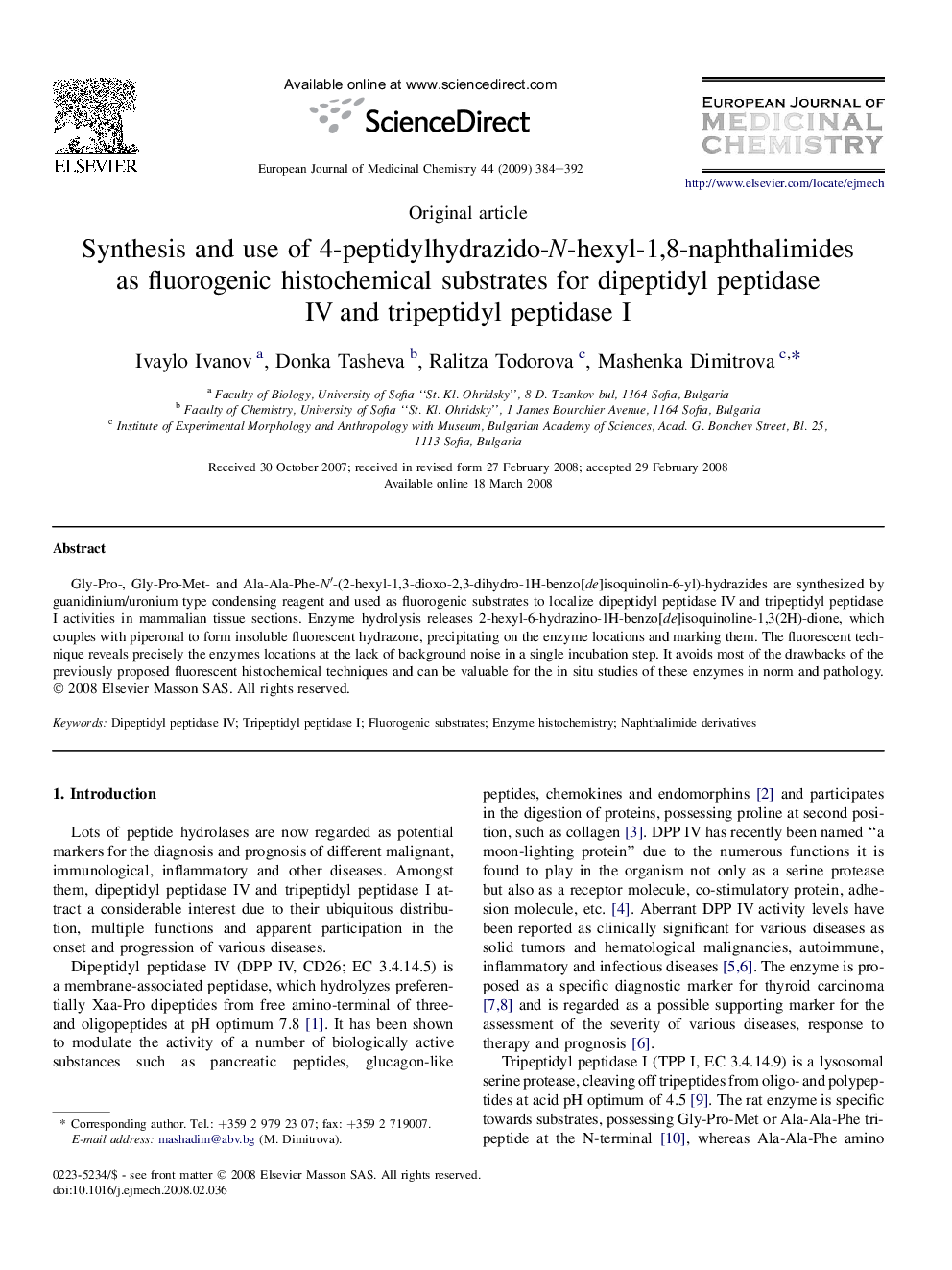| Article ID | Journal | Published Year | Pages | File Type |
|---|---|---|---|---|
| 1398061 | European Journal of Medicinal Chemistry | 2009 | 9 Pages |
Gly-Pro-, Gly-Pro-Met- and Ala-Ala-Phe-N′-(2-hexyl-1,3-dioxo-2,3-dihydro-1H-benzo[de]isoquinolin-6-yl)-hydrazides are synthesized by guanidinium/uronium type condensing reagent and used as fluorogenic substrates to localize dipeptidyl peptidase IV and tripeptidyl peptidase I activities in mammalian tissue sections. Enzyme hydrolysis releases 2-hexyl-6-hydrazino-1H-benzo[de]isoquinoline-1,3(2H)-dione, which couples with piperonal to form insoluble fluorescent hydrazone, precipitating on the enzyme locations and marking them. The fluorescent technique reveals precisely the enzymes locations at the lack of background noise in a single incubation step. It avoids most of the drawbacks of the previously proposed fluorescent histochemical techniques and can be valuable for the in situ studies of these enzymes in norm and pathology.
Graphical abstractPeptide fluorogenic substrates are synthesized and used for the histochemical localization of dipeptidyl peptidase IV and tripeptidyl peptidase I via the following principle.Figure optionsDownload full-size imageDownload as PowerPoint slide
